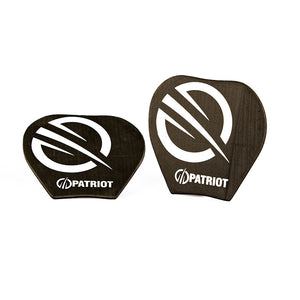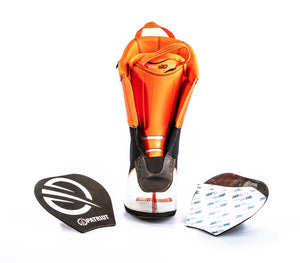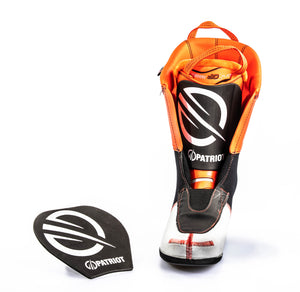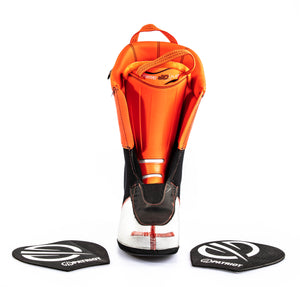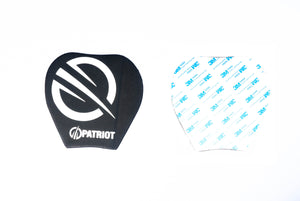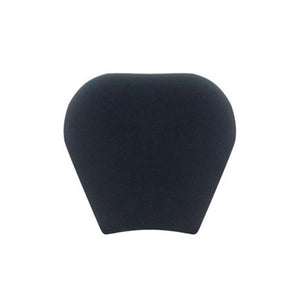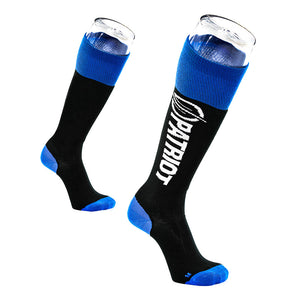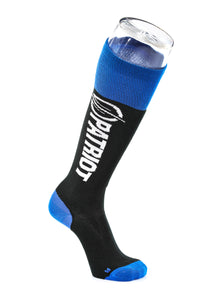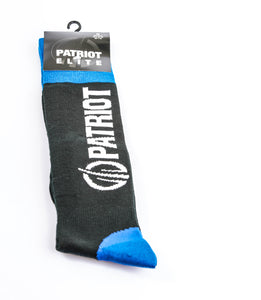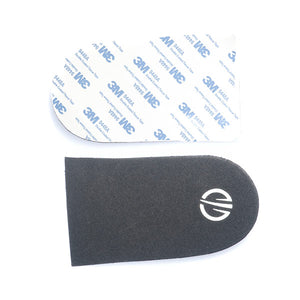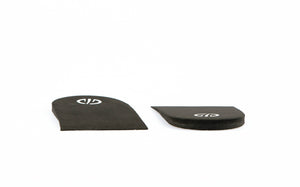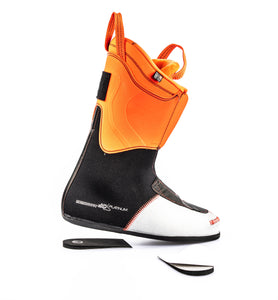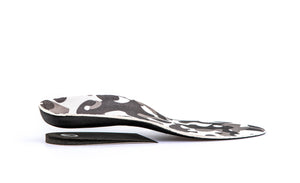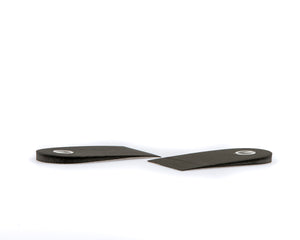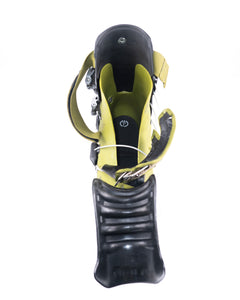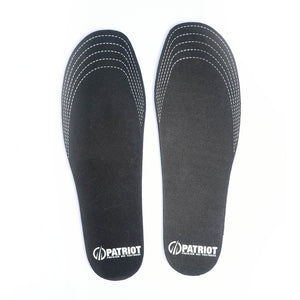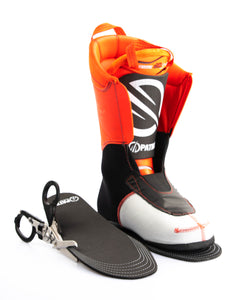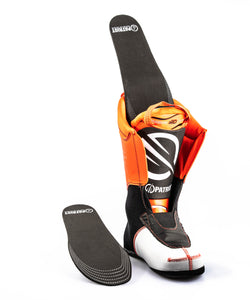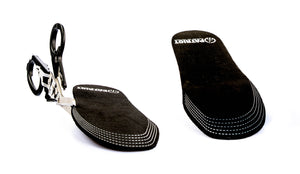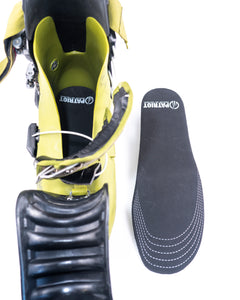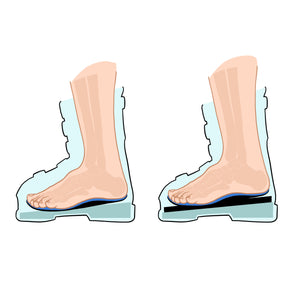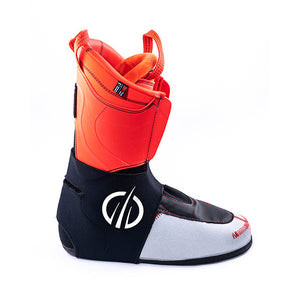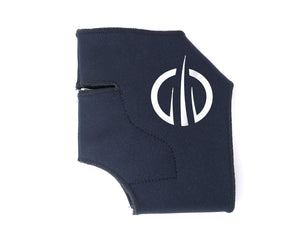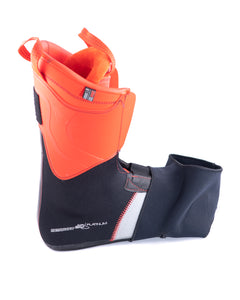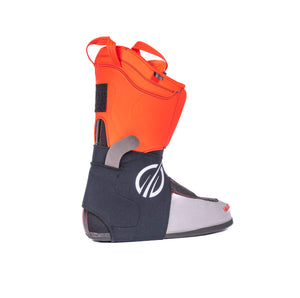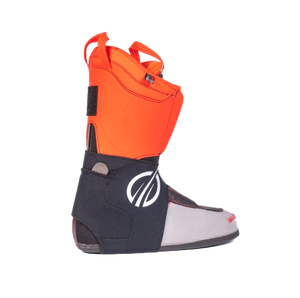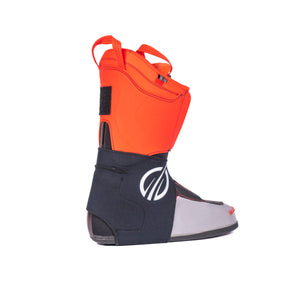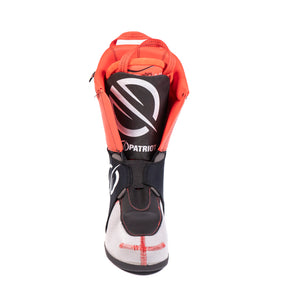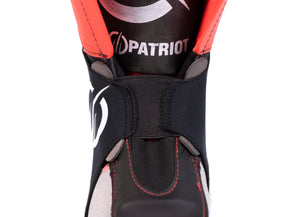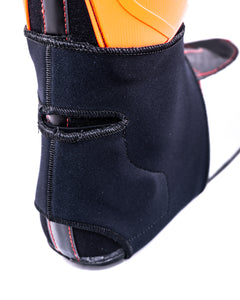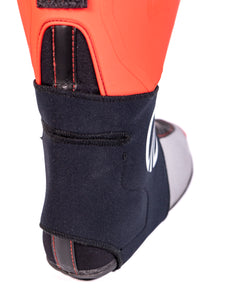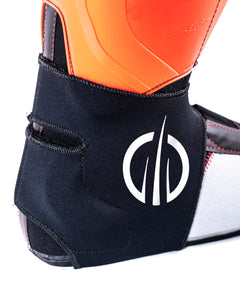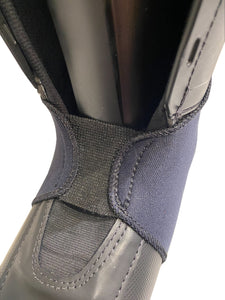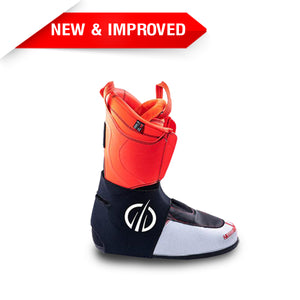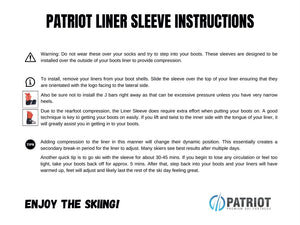Patriot
One who thinks and reasons for ones self; A proud citizen and defender of personal freedom;
Someone that has comfy ass ski boots!
You can have
Comfortable ski boots!
Are you sick of your ski days being ruined by sore feet? Want to fix the fit of your ski boots? Well you are in the right place! Patriot is the ultimate source to help you do something about it.

LETS TALK FOOTBEDS
A footbed is the place to start before moving on to other aspects of your boots.
The act of skiing puts a lot of unnatural forces on your feet and legs. This is due to the fact that there is a need to restrict certain movements to transfer your bodies energy through to your skis. These forces demand that you be secured in a hard plastic boot. Where the comfort aspect fails for many people is that the boot they are wearing does not surround and support the foot correctly.
Think of a footbed as the foundation of your whole body. 25% of your bodies bones are located below the ankle!
Comfort is achieved when your foot is stabilized, relaxed and you have good blood flow. You want your boot to be an extension of your body rather than just being on your feet.
FIRST - GET YOURSELF SOME FOOTBEDS!!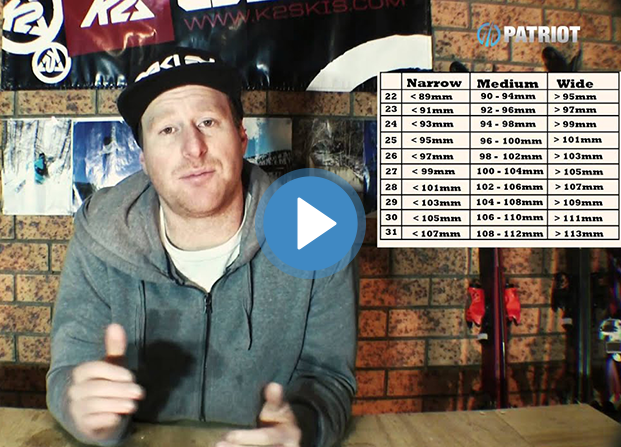
GET TO KNOW YOUR FEET!
Being clear on the true size and shape of your feet will be greatly helpful to you.
You want to measure the length, width and instep height.
< Watch this Video!
And use this information for both selecting and correcting ski boot fit.
NOW LETS ANALYZE YOUR PROBLEMS.
info
Shin Bang is one of the most common problems people experience in their ski boots. There is not much worse than getting constant bruised up and sore shins!
To prevent shin bang, you always want to be in contact with the front tongue of the liner and have a solid and consistent contact. You should be flexing forward in the front of your boots rather than bouncing against it.
Below are the best strategies to alleviate shin bang.
info
Do you hate the feeling of getting slammed into the front of your boots?
Toe Bang is usually caused by a boot that has too much length in the shell, or by having a toebox that doesn't match your anatomy and toe shape.
You can both prevent it and fix it and here are the ways to do so!
info
Most commonly caused by an unsupported foot.
Skiing puts a lot of demand on your feet to drive your bodies energy through your skis. Your foot will elongate and try to absorb shock and you will demand extra pressures on your foot muscles for steering. This will also add a lot of strain to the plantar fascia on the base of your foot.
You should prevent this strain by supporting your foots 3 arches and cradling your heel with a quality footbed.
Another cause of pain in the arch can be plantar fasciitis. It will usually be located to the rear of the foot towards the heel and likely caused by an injury or hard impact. Other issues may be tendonitis or nerve irritation.
Regardless of the cause of the pain, the best way to combat it is with a supportive footbed. If it persists a routine after skiing of ice and stretching will help recovery.
info
If your feet are burning while skiing it will usually point to a compression or nerve issue in the forefoot. It usually shows up as a burning or stinging sensation through the front of your feet.
So it will be crucial to ensure that you are first not being compressed in the width of the boot.
It can also be caused by an unstable foot in the boot and with adequate support it will help your foots muscles relax.
Lastly a metatarsal pad in the right location can bring the bones of the forefoot into alignment and relieve pressure on the nerves.
info
There is not much worse for your skiing ability than slopping around in ski boots. It will make you work your feet much harder to steer your skis and you will be completely off the railroad tracks.
Feeling snug and secure is the best thing you can have for control of your skis and will make dramatic improvements to your abilities.
Loose boots will be caused by having too much space in a certain part of your boot shell or from your liner packing out and expanding too much.
To combat either of these problems we should look to remove the extra space with some foam.
info
Sore ankles will only be caused by three things.
Either you will be slamming your ankle against the side of the shell. Or your ankle bone does not line up correctly with the existing ankle pocket.
Or your liner will be packed out and not adequately cushioning you from the boot.
info
Cold feet is the worst! It is a huge challenge to tackle especially on the really cold ski days.
There is a variety of reasons you will experiencing cold feet. Primarily it is your bodies natural reaction to draw blood away from your extremities to protect your organs. So you should take every opportunity to mitigate this.
info
The 5th matatarsal is the bone on the outside edge of your foot behind your pinky toe.
Pain here often occurs when either the width of your boot is not adequate. Or your foot is not properly supported and pronating. This will cause your foot to splay outward like a duck stance and force excess pressure outward on to the shell.
It can also show as a singular point of contact as a pressure point. Either on the pinky toe, just behind on the front of the 5th met (6th toe) or it can be back further on the foot towards your ankle.
info
If the heel pocket is too large or if your liner has started to pack out you may start lifting out of the heel when flexing your boot.
Dont be misled here however. If you are just standing in the boot and trying to lift your heel off the bottom it will always move up a couple of mm. It really only needs to be addressed if your heel lifts while flexing or skiing.
To remove this space, it is best to start with the Liner Sleeve.
Nothing locks in your heel like a liner sleeve! Exclusive to Patriot Footbeds, these sleeves are super easy to install.
With the ability to customise the amount of heel grab, the sleeve alone increases pressure for a nice tight and secure feeling. If you are super narrow in the heel, you can include the foam J bars that come with the sleeve as an extra.
info
If you are constantly skiing in the backseat or feeling tipped over the front of your skis, it is likely that you may need to adjust your angles to best suit your biomechanics and ankle ROM.
You should first take a measurement of your ankles range of motion ie. dorsiflex to guage what will be the best action to take. It will also be helpful to know what the current angles of your ski boot are in both ramp angle and forward lean.
Some boots will allow you to alter these angles simply by a mechanism. Other boots may require the use of heel wedges and spoilers to get these angles right.
info
Something every skier knows all too well.
When skiing in sub-zero temperatures, it can be quite hard to eliminate this problem completely in ski boots. On an extremely cold day it is something that basically everyone on the mountain will be feeling. You need to approach this problem just like the Cold Feet issue by mitigating all factors that can cause cold feet. but then we can start to get more specific for the toes.
and find your best solutions!
How to fix
To fix shin bang, you should first identify what is the main cause and then use these strategies to help eliminate it.
1. Check your ski boot shells vs your foot size to ensure you are in the correct boot sizing.
2. Install Footbeds to acheive the best alignment of your foot and lower leg.
3. Try Dualstraps! These allow you to keep your liner in constant contact with your shin!
4. Use thin ski socks with minimal padding to not add too much bulk.
5. Aftermarket liners, (such as Intuition or Palau) can quickly absorb shin pressure and provide greater comfort.
6. Experiment with your angles. So a spoiler under the calf or possibly a heel wedge.
7. Tongue shim to remove excess volume in the cuff.
and find your best solutions!
How to fix
To help get the pressure off your toes and stop the sliding up into the front you should go through each of these steps.
1. Do a shell check to ensure you are in right size of boot.
2. Install a Footbed to prevent elongation of your foot. Also a footbed will absorb shock and secure your foot position to stop you from sliding back and forward.
3. Heel wedge will increase ramp angle and draw the foot back off the front of the boot. Great for anyone with poor ankle range of motion.(dorsiflex)
4. Cut your toenails short!
5. Tongue shim to secure leg back into the boot and prevent forward slide.
6. If necessary reshape toe box with a stretch to the boots.
and find your best solutions!
How to fix
A supportive footbed is the key to preventing arch pain.
When you are able rely on less foot movement to achieve the steering on your skis, less strain is required on your feet. Impacts are reduced and you don't have to work hard to stay in control. Just a couple of the extensive benefits a footbed provides, if you have experienced sore and tired feet from skiing it will all change with adequate suppport.
and find your best solutions!
How to fix
1. Footbed. (Patriot footbeds include a small metatarsal dome to help balance the forefoot.)
2. Shell Check. Be sure to have enough width in the forefoot.
3. Strengthen your feet with regular mobile excercise.
4. Stretch width if required.
5. Install a larger metatarsal dome on your footbed. This will help relieve pressure across your forefoot.
6. Use a gel toe spreader. If your boots allow it, this can directly soften pressure on the nerve that sits between your metatarsal bones.
7. If burning/stinging continues after shell width and footbed have been addressed, you may have an acute nerve issue and should seek extra advice from a boot fitter or medical professional.
and find your best solutions!
How to fix
1.Do a shell check to see sizing.
2. Install a footbed to stabilize the foot.
3. If loose in the heel, add a liner sleeve to lock in around ankles.
4. If loose in front, add a volume reducer for better contact around whole foot.
5. If loose in cuff or too much space in front of leg, install a tongue shim.
6. If loose throughout, tackle the problem with a combination of shims. see: loose boots kit.
7. When possible, look to find a smaller or narrower boot with a tighter fit for the long term solution.
and find your best solutions!
To solve this you can:
1. Install ankle locks around ankle bones to relieve the pressure.
2. Add a foam shim above the ankle to the outside of your liner. This will redistribute the contact to the lower leg, holding your ankle away from the side of the boot shell.
3. Create a new ankle pocket by making an alteration to the shell with either a punch or grind. The most effective method will usually be a punch.
and find your best solutions!
How to fix
1. Wear good clothing with adequate thermal insulation. You have to keep your body warm to allow your body to continue to pump warm blood to your feet.
2. Good quality (thin) wool ski socks to keep your feet dry.
3. Footbeds to promote good blood circulation through your feet.
4. Proper fit of boot and buckle tension to ensure blood is not being constricted.
5. Aftermarket liners for better insulation.
6. Ensure liners are dry every day before skiing.
7. Do the ON/OFF method as seen in attached video. This will be a game changer for so many of you.
8. Last resort will be a possible need to install battery boot heaters or socks.
and find your best solutions!
To solve this issue you should first:
1. Install a footbed to stabilize and correct foot stance.
2. Modify the boot with a shell heat molding. Add extra foam to the spot while doing the molding process to force extra space to your boots.
3. Modify shell if needed with either a stretch, grind or localised punch to area.
and find your best solutions!
How to fix
To tackle heel lift you will want to remove excess space from your boots.
1. Install a Liner Sleeve to secure your heel and ankles and lock the back of your boots.
2. If your issue is too much space over your foot and instep, allowing your heel to lift upwards. Fix by reducing excess space in your boots with a volume reducer.
3. Cradle your heel and get better security with a footbed that has a deep heel cup that will prevent slipping at the heel.
and find your best solutions!
How to fix
A heel wedge increases ramp angle by 2 degrees. This will help a skier stay forward, flex the front of the boots correctly and have better contact along the base of the boots.
A spoiler installed at the back of the boots under the calf helps fine tune stance with a more aggressive stance.
and find your best solutions!
How to fix
1. Warm, dry liners to begin the day.
2. Wool ski socks to keep your feet dry
3. Footbeds to promote circulation.
4. Ensure there is not excessive pressure across the top of the foot. When blood is constricted here, it can prevent the flow to your toes. A liner modification can usually resolve this.
5. The ON/OFF method in attached video.
6. Ensure you have ability to move toes up and down. Doing this on lifts will help circulation.
7. Ensure tension around the calf and ankles is not too much.
8. Possible need to install battery boot heaters.

